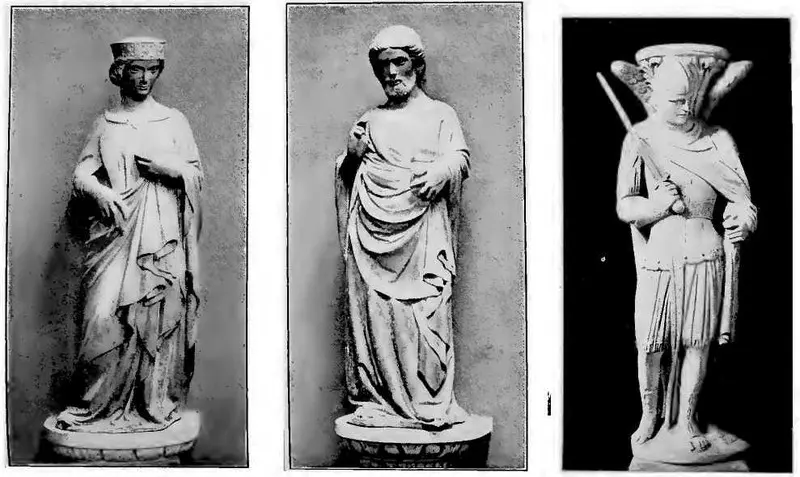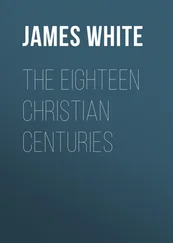James Walsh - The Thirteenth, Greatest of Centuries
Здесь есть возможность читать онлайн «James Walsh - The Thirteenth, Greatest of Centuries» — ознакомительный отрывок электронной книги совершенно бесплатно, а после прочтения отрывка купить полную версию. В некоторых случаях можно слушать аудио, скачать через торрент в формате fb2 и присутствует краткое содержание. Жанр: foreign_prose, История, foreign_edu, foreign_antique, на английском языке. Описание произведения, (предисловие) а так же отзывы посетителей доступны на портале библиотеки ЛибКат.
- Название:The Thirteenth, Greatest of Centuries
- Автор:
- Жанр:
- Год:неизвестен
- ISBN:нет данных
- Рейтинг книги:3 / 5. Голосов: 1
-
Избранное:Добавить в избранное
- Отзывы:
-
Ваша оценка:
- 60
- 1
- 2
- 3
- 4
- 5
The Thirteenth, Greatest of Centuries: краткое содержание, описание и аннотация
Предлагаем к чтению аннотацию, описание, краткое содержание или предисловие (зависит от того, что написал сам автор книги «The Thirteenth, Greatest of Centuries»). Если вы не нашли необходимую информацию о книге — напишите в комментариях, мы постараемся отыскать её.
The Thirteenth, Greatest of Centuries — читать онлайн ознакомительный отрывок
Ниже представлен текст книги, разбитый по страницам. Система сохранения места последней прочитанной страницы, позволяет с удобством читать онлайн бесплатно книгу «The Thirteenth, Greatest of Centuries», без необходимости каждый раз заново искать на чём Вы остановились. Поставьте закладку, и сможете в любой момент перейти на страницу, на которой закончили чтение.
Интервал:
Закладка:
In Germany, just at the same time, the Nibelungen-Lied was receiving the form in which it was to live as the great National epic. The Meistersingers also were accomplishing their supreme work of Christianizing and modernizing the old German and Christian legends which were to prove such a precious heritage of interest for posterity. In the South of Germany the Minnesingers sang their tuneful strains and showed how possible it was to take the cruder language of the North, and pour forth as melodious hymns of praise to nature and to their beloved ones as in the more fluent Southern tongues. Most of this was done in the old Suabian high German dialect, and the basis of the modern German language was thus laid. The low German was to prove the vehicle for the original form of the animal epic or stories with regard to Reynard, the Fox, which were to prove so popular throughout all of Europe for all time thereafter.
In North France the Trouvères were accomplishing a similar work to that of the Minnesingers in South Germany, but doing it with an original genius, a refinement of style characteristic of their nation, and a finish of form that was to impress itself upon French literature for all subsequent time. Here also Jean de Meun and Guillaume de Lorris wrote the Romance of the Rose, which was to remain the most popular book in Europe down to the age of printing and for some time thereafter. At the South of France the work of the Troubadours, similar to that of the Trouvères and yet with, a spirit and character all its own, was creating a type of love songs that the world recurs to with pleasure whenever the lyrical aspect of poetry becomes fashionable. The influence of the Troubadours was to be felt in Italy, and before the end of the Thirteenth Century there were many writers of short poems that deserve a place in what is best in literature. Men like Sordello, Guido Cavalcanti, Cino da Pistoia, and Dante da Maiano, deserve mention in any historical review of literature, quite apart from the influence which they had on their great successor, the Prince of Italian poets and one of the immortal trio of the world's supreme creative singers—Dante Alighieri. With what must have seemed the limit of conceit he placed himself among the six greatest poets, but posterity breathes his name only with those of Homer and Shakespeare.
Dante, in spite of his giant personality and sublime poetic genius, is not an exception nor a solitary phenomenon in the course of the century, but only a worthy culmination of the literary movement which, beginning in the distant West in Spain and England, gradually worked eastward quite contrary to the usual trend of human development and inspired its greatest work in the musical Tuscan dialect after having helped in the foundation of all the other modern languages. Dante is the supreme type of the Thirteenth Century, the child of his age, but the great master whom medieval influences have made all that he is. That he belongs to the century there can be no doubt, and of himself alone he would be quite sufficient to lift any period out of obscurity and place it among the favorite epochs, in which the human mind found one of those opportune moments for the expression of what is sublimest in human thought.
It is, however, the bock of the Arts of the Thirteenth Century that deserves most to be thumbed by the modern reader intent on learning something of this marvelous period of human existence. There is not a single branch of art in which the men of this generation did not accomplish excelling things that have been favorite subjects for study and loving imitation ever since. Perhaps the most marvelous quality of the grand old Gothic cathedrals, erected during the Thirteenth Century, is not their impressiveness as a whole so much as their wonderful finish in detail. It matters not what element of construction or decoration be taken into consideration, always there is an approach to perfection in accomplishment in some one of the cathedrals that shows with what thoroughness the men of the time comprehended what was best in art, and how finally their strivings after perfection were rewarded as bountifully as perhaps it has ever been given to men to realize.
Of the major arts—architecture itself, sculpture and painting—only a word will be said here since they will be treated more fully in subsequent chapters. No more perfect effort at worthy worship of the Most High has ever been accomplished than is to be seen in the Gothic cathedrals in every country in Europe as they exist to the present day. While the movement began in North France, and gradually spread to other countries, there was never any question of mere slavish imitation, but on the contrary in each country Gothic architecture took on a national character and developed into a charming expression of the special characteristics of the people for whom and by whom it was made. English Gothic is, of course, quite different to that of France; Spanish Gothic has a character all its own; the German Gothic cathedrals partake of the heavier characteristics of the Northern people, while Italian Gothic adds certain airy decorative qualities to the French model that give renewed interest and inevitably indicate the origin of the structures.
In painting, Cimabue's work, so wonderfully appreciated by the people of Florence that spontaneously they flocked in procession to do honor to his great picture, was the beginning of modern art. How much was accomplished before the end of the century will be best appreciated when the name of Giotto is mentioned as the culmination of the art movement of the century. As we shall see, the work done by him, especially at Assisi, has been a source of inspiration for artists down even to our own time, and there are certain qualities of his art, especially his faculty for producing the feeling of solidity in his paintings, in which very probably he has never been surpassed. Gothic cathedrals in other countries did not lend themselves so well as subjects of inspiration for decorative art, but in every country the sacred books in use in the cathedral were adorned, at the command of the artistic impulse of the period, in a way that has made the illuminated missals and office books of the Thirteenth Century perhaps the most precious that there are in the history of book-making.

ARCHANGEL MICHAEL (GIOVANNI PISANO, PISA)
CHRIST (ANDREA PISANO, FLORENCE)
STA. REPARATA (ANDREA PISANO, FLORENCE)
It might be thought that in sculpture, at least, these Thirteenth-Century generations would prove to be below the level of that perfection and artistic expression which came so assuredly in other lines. It is true that most of the sculptures of the period have defects that make them unworthy of imitation, though it is in the matter of technique that they fail rather than in honest effort to express feelings appropriately within the domain of chiseled work. On the other hand there are some supreme examples of what is best in sculpture to be found among the adornments of the cathedrals of the period. No more simply dignified rendition of the God Man has ever been made in stone than the statue of Christ, which with such charming appropriateness the people of Amiens have called le Beau Dieu , their beautiful God, and that visitors to their great cathedral can never admire sufficiently, admirably set off, as it is, in its beautiful situation above the main door of the great cathedral. Other examples are not lacking, as for instance some of the Thirteenth-Century effigies of the French kings and queens at St. Denis, and some of the wonderful sculptures at Rheims. In its place as a subsidiary art to architecture for decorative purposes, sculpture was even more eminently successful. The best example of this is the famous Angel Choir of Lincoln, one of the most beautiful things that ever came from the hand of man and whose designation indicates the belief of the centuries that only the angels could have made it.
Читать дальшеИнтервал:
Закладка:
Похожие книги на «The Thirteenth, Greatest of Centuries»
Представляем Вашему вниманию похожие книги на «The Thirteenth, Greatest of Centuries» списком для выбора. Мы отобрали схожую по названию и смыслу литературу в надежде предоставить читателям больше вариантов отыскать новые, интересные, ещё непрочитанные произведения.
Обсуждение, отзывы о книге «The Thirteenth, Greatest of Centuries» и просто собственные мнения читателей. Оставьте ваши комментарии, напишите, что Вы думаете о произведении, его смысле или главных героях. Укажите что конкретно понравилось, а что нет, и почему Вы так считаете.












